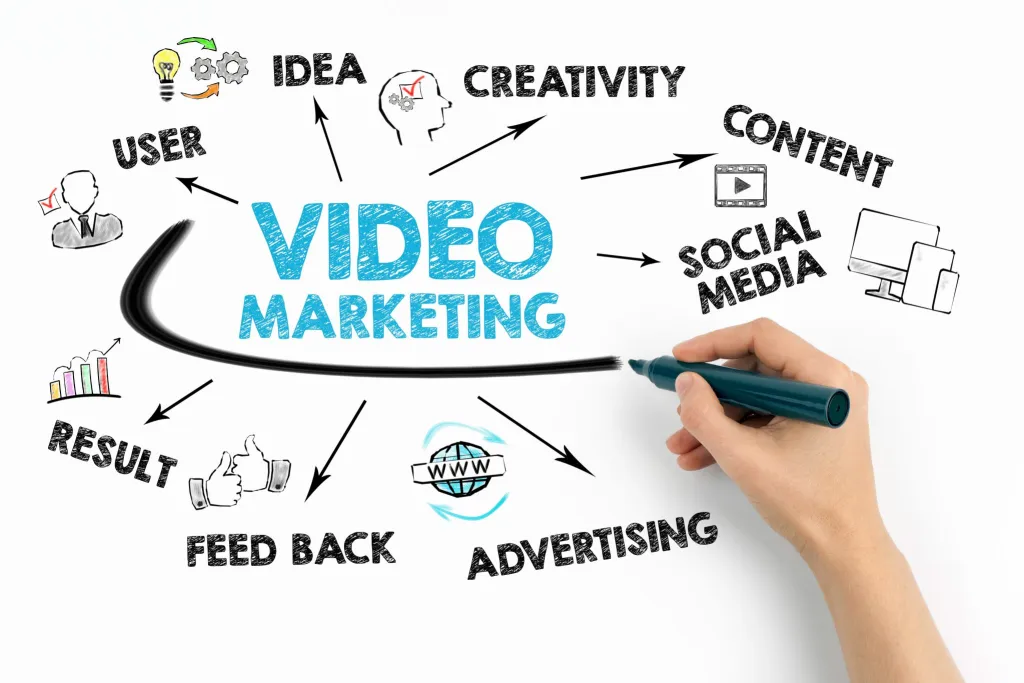
Why Video Marketing is the Game Changer for Brands in 2025
In 2025, video marketing has solidified its place as the most powerful tool for brand communication. With the rise of short-form content, live streaming, and AI-powered video creation, businesses that harness video effectively can gain a significant competitive edge. This article explores the dominance of video content and how brands can leverage it to boost engagement, conversions, and brand loyalty.
The rise of video content in 2025 can largely be attributed to shifting consumer preferences. Audiences now favor video over static images and text, with platforms like TikTok, Instagram Reels, and YouTube Shorts leading the way. Studies indicate that short-form videos have the highest engagement rates, making them ideal for brands looking to capture attention in a crowded digital landscape. Moreover, social media algorithms are increasingly prioritizing video content over other formats, ensuring that businesses incorporating video into their strategy enjoy better organic reach and engagement.
Advancements in AI and automation have further simplified the video creation process. Businesses no longer need extensive resources to produce high quality videos, as Tech tools assist in generating scripts, editing footage, and even creating videos from text-based prompts. Additionally, live streaming and interactive video formats, such as shoppable videos and real-time Q&A sessions, have gained popularity. These formats provide brands with opportunities to foster deeper connections with their audiences. Furthermore, video content significantly improves conversion rates. Research shows that consumers are more likely to purchase after watching a video than after reading a static post, reinforcing the importance of video in marketing strategies.
To effectively leverage video marketing, businesses must focus on creating value-driven content that educates, entertains, or inspires. This includes how-to guides, behind-the-scenes footage, product tutorials, and emotionally resonant storytelling. Optimizing video for mobile-friendly consumption is crucial, given that mobile usage is at an all-time high. Brands should ensure their videos are vertical, concise, and feature compelling hooks within the first few seconds to capture attention. User-generated content (UGC) is another powerful tool, as it builds authenticity and trust by encouraging customers to share their own experiences with a brand’s products or services.
AI-driven video personalization is another trend businesses can capitalize on. Personalized video emails, customized product recommendations, and interactive storytelling keep audiences engaged and increase conversion rates. A multi-platform video strategy is also essential. Instead of relying on a single channel, brands should distribute video content across TikTok, Instagram, LinkedIn, YouTube, and their websites to maximize reach and engagement.
One of the most common questions businesses ask is how to create video content that drives engagement. The type of content that performs best includes short-form videos, behind-the-scenes clips, tutorials, and storytelling videos. The key is to create content that is relatable, visually appealing, and provides value to the audience. Video length also matters. While TikTok and Instagram Reels favor videos under 60 seconds, YouTube audiences engage more with 5-10 minute videos, and LinkedIn users prefer concise yet informative clips of 1-3 minutes. To enhance engagement, videos should have an attention-grabbing hook within the first three seconds, include captions, add music or sound effects, and incorporate storytelling elements. A strong call-to-action (CTA) encourages viewer interaction.
Many brands worry about the cost of video production, but high-quality videos can be created using just a smartphone with good lighting and proper framing. Free or affordable video editing tools like CapCut, InShot, and Canva make it easier than ever to enhance video quality without requiring a big budget. Posting consistently is also crucial. Businesses should aim to post at least 3-5 videos per week across different platforms to keep their audience engaged and ensure better visibility from social media algorithms.
Measuring the success of video content requires tracking key metrics such as watch time, engagement rate (likes, comments, shares), conversion rates, and audience retention. Using analytics tools available on social media platforms helps brands assess performance and adjust their strategies accordingly.
In 2025, video marketing is no longer optional it is essential. Brands that embrace video as a core part of their strategy can build stronger connections, drive higher engagement, and ultimately boost sales. Whether through short-form clips, live streams, or AI powered personalization, businesses have more tools than ever to create compelling video content. The key is to experiment, analyze results, and continuously refine your approach to stay ahead in the digital landscape.